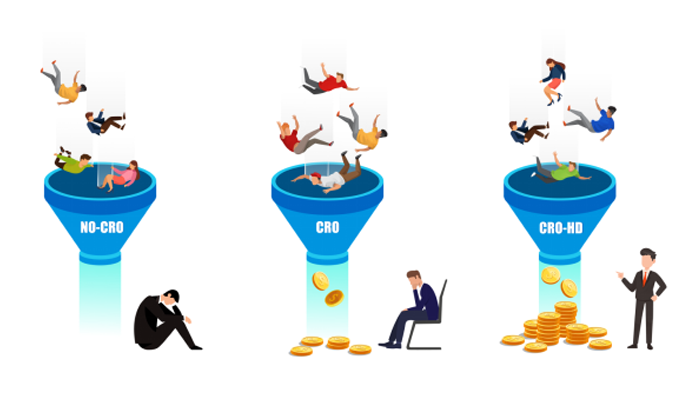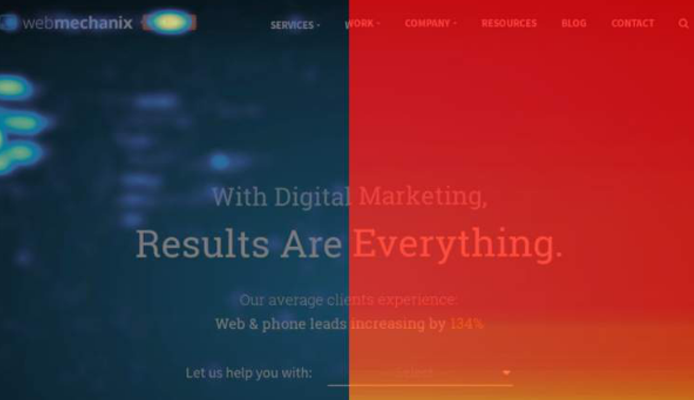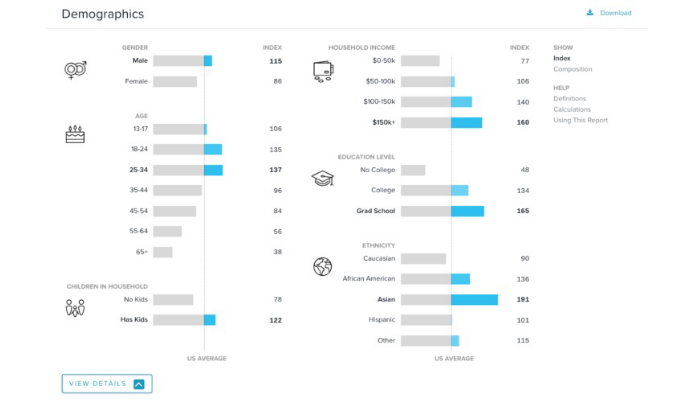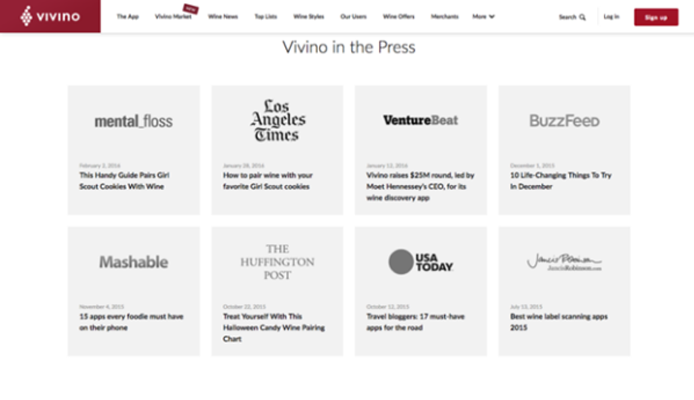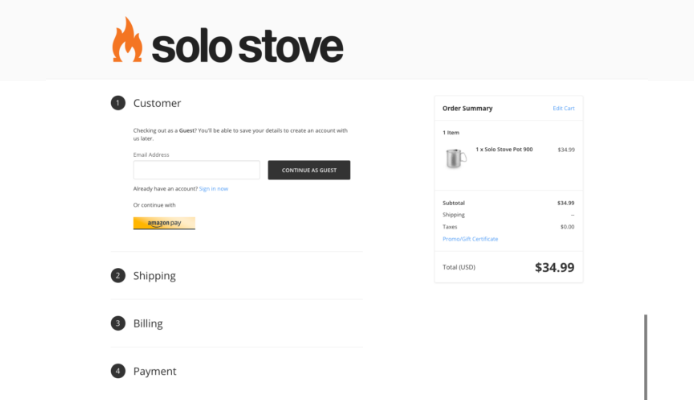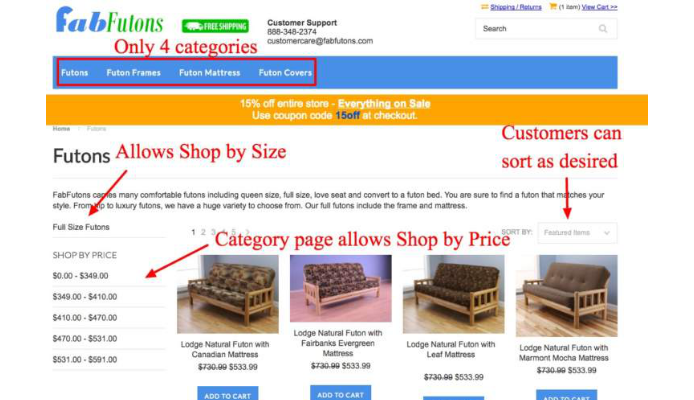The definitive guide to eCommerce Conversion Rate Optimization
Customers are your biggest contributors in the world of e-commerce. When you boost traffic to generate sales, it's important that you're able to get traffic that pays, i.e. customers who give you income to keep the business going. During every step of the purchasing journey for a customer, there are many opportunities to enable them to shop quicker and enjoy the experience as well.
The eCommerce customer rate optimization is seen as a way to improve the quality of traffic coming onto your website and increasing the likelihood of a purchase. Fine-tuning your online store and pushing people to make a purchase, is called Conversion Rate Optimization or CRO.
Conversions are crucial if you'd like to improve your business and make money off the customers visiting your store. They offer you the necessary revenue to keep your business alive and allow casual visitors to purchase your products as well.
Understanding eCommerce conversion rate
An online store needs to be designed around your customers and their experience online. Converting them into purchasing customers is the biggest challenge and conversions can be defined through various goals, including having product clicks, adding to cart, and also being dependent on what you view as a conversion.
You need to constantly update and test the different parts of a website to optimize your store for online conversions.
What is conversion in an eCommerce business
The end goal in your business can be defined as a successful conversion, and you need to know what it is you'd like to define as one. Generally, the conversion rate refers to the percentage of online visitors who end up purchasing something from the online store.
There are other ways to determine typical conversions for eCommerce websites as well-
- 1. An online sale.
- 2. Users adding products to their carts.
- 3. Users adding items to their wishlists.
- 4. Signups to emails.
- 5. Shares on Social Media.
- 6. KPIs that your company finds valuable.
A decent conversion rate for eCommerce is considered anywhere between 1-2%. If you're doing well, the conversion rate goes past 2%.
How do you calculate the conversion rate for an eCommerce website
The formula to calculate the conversion rate is to divide the conversion into visitors. For example, if your store sees 5,000 visitors, with 50 conversions for a certain period, then your store's conversion rate is 1%.
Most of the analytics tools provide the conversion rate in different segments of the data. You need to know exactly what your customers are doing in order to set up the right benchmarks for conversion rates. Depending on how they interact with your website, you'll be able to gauge a standardized method to decide the eCommerce conversion rate.
Of course, to successfully understand what your benchmark should be, you need to constantly test. It is one of the best ways to successfully decide. You need to understand what your current issues are when it comes to conversion and once you understand the basics, you can test better.
Tools to improve the eCommerce conversion rate
There are some amazing tools that can help analyze and improve the overall conversion rate. Here are some of the best
1. HotJar
This is a tool that allows your users to smartly interact with your website. It allows you to gain the functionality of the click, scroll-depth mapping, and cursor movement as well. Based on the plan, the heatmap will capture up to 10,000 pageviews and also compile analyses aggressively.
There are other invaluable tools including session recording, that allow for real-time analysis of the customer. HotJar can record each individual user session that can be watched to understand the journey of the user. Organically, it can allow for the companies to make changes.
2. Quantcast Measure
Quantcast Measure is a new addition to the list of tools for analysis and it has proven to be super valuable. It can be defined as an analytics tool that is tag-based and can be defined as being somewhere between Facebook and Google Analytics. It measures users' site usage and provides demographic data on a per-click basis.
Quantcast also allows everyone to view their metrics with the composition view, and on an indexed basis. It allows you to gain proper insights into the visitors you're reaching.
3. Google Analytics
Google Analytics is seen as one of the best tools for most websites. It allows you to enjoy a greater view of the website visitors, including -
- 1. How the visitors found your site. This gives you an understanding of how visitors reached your site - whether via Google keyword searches, direct visits, social media and more
- 2. How long each visitor stayed on the website and whether they are unique or new visitors.
- 3. What OS, the browser was used and if the customer came via desktop/laptop or mobile phones
- 4. How many visitors converted totally and the interaction that leads to their conversion
- 5. Links to the Google Adwords campaigns and paid traffic tracking as well.
Enhancing the customer experience ultimately leads to a sale or a conversion. The tools above allow you to measure the same. There are many amazing tools that enhance the user's experience thereby increasing the conversion.
Strategies to boost your eCommerce conversion rates
There are no set strategies to boost eCommerce conversion rates, but there are plenty of basic procedures that can be followed -
1. Homepage Ideas
When you think of your homepage, picture a physical storefront. It is the front window that ignites curiosity, captures attention, and pulls people in as well. The homepage needs to be inviting and simplify the process for new users to enter and navigate the website. If it is visually appealing, it can give an overall satisfactory experience in working towards a single goal.
1.1. Simplify the Experience
Simplicity is the keyword when it comes to designing a nice homepage. A customer forms an impression of your website in just 2/10ths of a second so you need to capture their attention, and fast.
You shouldn’t overwhelm them with many text or image-heavy designs. Keeping it simple in this domain is the best way to go about it.
1.2 Real-time purchases, Coupon codes and more
When a customer enters the homepage, you can build excitement and drive them towards your products. There are a bunch of great apps for Shopify store owners to increase demand and incentivize purchases.
Popups are another fantastic way to build an email list. Email marketing is an effective way to convert customers, as 80% end up making purchases based on the promotional email they've released.
1.3 Add testimonials to build trust
Testimonials are a great way to build trust because 88% of consumers believe them as much as they would trust a recommendation from a friend or family member. You can reach out to bloggers specializing in your domain, or even post testimonials from happy customers on your site and it will validate your work even further.
2. Product Discovery
As customers arrive on your homepage, they need to find products they are interested in and discover. There are a few ecommerce marketing tools that can help them do that.
2.1 Use Intelligent Search
Integrating an intelligent search bar on your home page will help customers search for their specific items in a much easier and faster way. You can feature the bar on the homepage to give customers the opportunity to head there directly.
2.2. Organize categories effectively
Navigating the website needs to be simple and obvious. Separate products into different categories and try to have specific subcategories in dropdown menus.
2.3 Take advantage of 404 pages
If your 404 pages lead to a dead-end, you need to guide them to any other section of the website that is more useful. Customize the page to feature the links to the most popular products, promotions, and collections.
2.4 Add a Shoppable Instagram feed
Instagram is a useful tool that allows you to embed the feed onto the website. You can show off beautiful photos and allow people to shop them directly off the site.
3. Product Pages ideas
The products you showcase need to be built around communicating the core value of the products. You can improve the experience by -
3.1 Using high-quality images
High-quality images are important because nearly _ of all customers say it plays an important role in their purchasing decision.
3.2 Be upfront about price, delivery time, and out of stock products
You need to be upfront about the different aspects of a product - price, delivery time, etc. because 28% of customers will end up abandoning it if they are charged with unexpected shipping costs.
3.3. Showcase Product Reviews
Product reviews are a great way to ease shoppers' minds about interacting with you. 90% of customers claim that their purchasing decisions are influenced by online product reviews.Good customer reviews can go a long way in convincing clients to go forth and purchase products.
3.4 Add a curated Instagram feed
Curated Instagram feeds help in adding an element of social proof to the product page. They are especially useful for apparel and beauty companies since they can show customers the way in which these products can be worn or used.
4. The Experience during Checkout
The customer's experience during checkout comes in the last few steps of the purchasing process. Hence, it needs to be as flawless as possible. Here's how you can make it easier for them -
4.1 Pre-fill the customer information
Pre filling the customer's information ensures they can complete the shopping process faster without having to enter a lot of other details in between.
4.2 Send abandoned cart emails
Abandoned cart emails make it easier for customers to shop items they might have abandoned during a session. It allows them to return to the site and complete the purchase, straight from their inboxes.
4.3 Optimize your thank your emails
By sending out thank you emails, you are endearing yourself to the customer and ensuring they enjoy their overall experience and end on a nice note.
5. Shipping and Returns
5.1 Offer free shipping
Free shipping is one way to ensure customers can save on spending their money to get the product delivered. It is one of the best eCommerce customer rate optimization tactics out there.
5.2 Have a clear refund policy
Customers need to be informed about the refund policy well beforehand to avoid any last-minute conflict or complaints.
6. Additional information
6.1 Tell a story with your About Page
The About Page talks all about your company and who you are. It needs to be properly edited and have a great story to entice customers to keep shopping.
6.2 Create a comprehensive contact page
A contact page informs the customer all about how they can get in touch with you. Make sure it is properly populated with the right information at all times.
7. Website Speed and Performance
7.1 Ensure that the site is responsive
You cannot afford to have an unresponsive page, especially on an eCommerce site. Ensure your site is always working and up to speed at all times.
7.2 Your website's loading times need to be optimized
The loading times need to be fast, so always try to optimize the website by compressing images and reducing content, but making sure it retains its charm.
Conclusion
Thus, by following the above methods, you will be able to ensure your eCommerce customer rate optimization rates remain high and give you the returns you deserve.
Author -
AdNabu is a Google ads software built for eCommerce businesses. It helps improve sales in Google Ads for eCommerce companies. If you are running search ads, google shopping or display campaigns in Google Ads, this software will be able to increase your sales.



